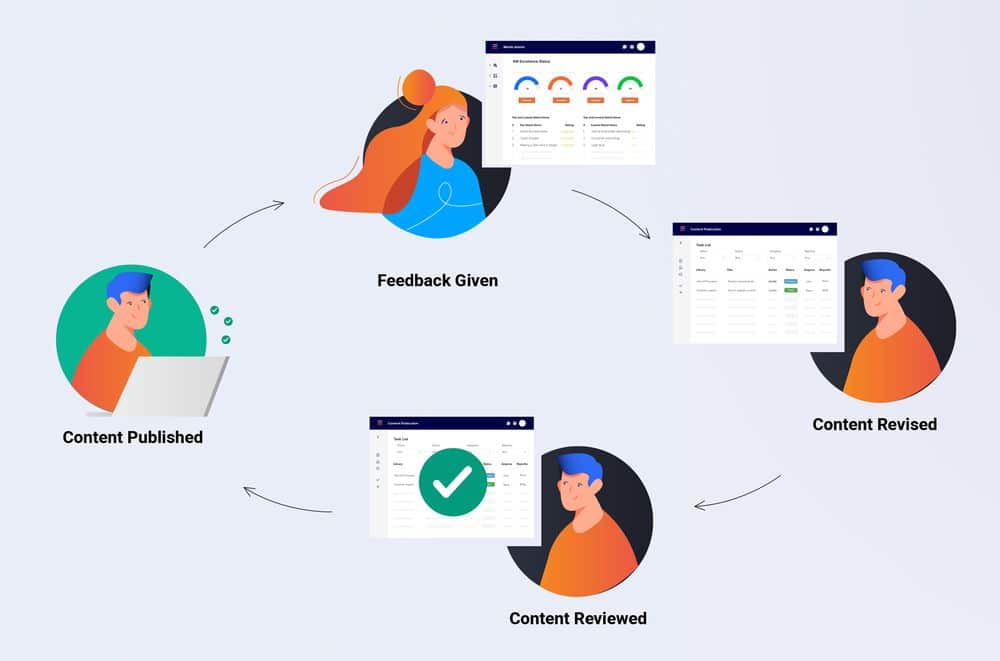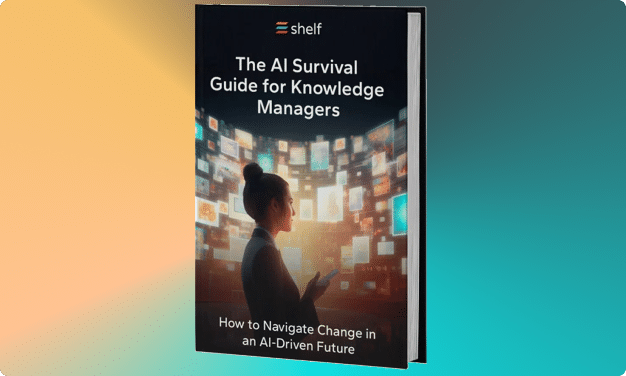Every contact center knowledge manager I’ve met knows the frustration of selling an IT initiative up the ladder only to have it rejected. You spend hours speaking to different vendors, comparing feature after feature, giving recommendations to your manager, responding to emails—all to no avail.
You can’t control what happens behind closed doors, even as the one who implements new knowledge software. The project sponsor must approve, the board of directors must approve. You wait.
Eventually management makes a final decision on software you’ve been reviewing for weeks, and you must live with the result.
Even if you’re not evaluating new vendors, existing knowledge vendors can waste a lot of your time too—like time spent waiting on a new feature or version you hope will solve all your knowledge problems. It sounds promising to migrate from the on-prem version of SharePoint to SharePoint Online until you attempt it—everyone loves a magic bullet solution. Vendors promise custom features all the time, few deliver very much.
Don’t wait on a legacy solution to solve a modern problem it wasn’t designed to solve; instead spend time improving your knowledge management process.
If you don’t have a process that produces helpful content, it doesn’t matter how many fancy new solutions you explore or implement. Success in your role comes down to blocking and tackling; things you control like how authors publish new content, how users leave feedback, how reviewers incorporate feedback, how they update content.
If you fix a few common knowledge management mistakes, you can make a real impact, regardless of the solution you’re stuck with.
Check out these three tips to improve how you manage knowledge and the experience people have using this content.
Knowledge Management Tip #1
Don’t create content in a vacuum
Far too often companies let internal experts write all the content they want with zero input from others. Too many writers don’t gather feedback from those who use what they produce—like front-line agents—and instead create content they think is good enough.
Many writers don’t have a clue what contact center agents need; after all, most creators don’t provide answers to customers.
If you struggle to ensure content is always helpful, you’re not alone; even large brands I’ve met fail to publish content that resonates with every audience. Sometimes an article requires more than translation to be helpful to some customer groups— content should include regional nuances—nuances that require writers to work with others to ascertain.
Since you’ll get blamed for negative feedback on content anyway, encourage employees to work together on all customer-facing content.
Encourage collaboration: a knowledge management best practice
Your content review process should make collaboration easy for experts, managers, and those using content like customer support agents. Easier said than done, always ensure creators marry more than one perspective before they hit the publish button; otherwise you’ll end up with a library full of articles that won’t help customers or agents find answers quickly.
The right company culture encourages collaboration, and though you can’t change culture overnight, work management software can help facilitate communication. Not all knowledge management solutions make collaboration easy, some knowledge bases don’t include features like tagging users or sending articles to a review queue.

Before you implement anything, you should first gather intel from agents, product specialists, and anyone who interacts with knowledge. A quick Zoom call is all it takes to get people talking and giving feedback; you’ll learn a lot, plus agents will thank you for caring enough to improve content they use.
Here are some practical questions to ask agents, executives, and others who publish or use knowledge:
- What content is most helpful as an agent, and why?
- What content is least helpful as an agent, and why?
- What content is used most? Is content used most often up-to-date?
- Is it difficult to access knowledge when you need it? If so, why?
- What is being done to make it easy for agents to use the knowledge you have?
- What is the current process for publishing and updating content?
Knowledge Management Tip #2
Keep content fresh—create a feedback loop
Once contact center agents and creators begin communicating and offering feedback on content that needs revising, the work doesn’t stop there. Feedback and revision should be continual—not a one time activity—to ensure you always have the most usable content available.
Create a content review team
It’s great if contact center agents leave feedback, but doing something with that feedback requires a review process. Don’t just publish a new version of a how-to article after someone complains; ensure you publish an approved version your review team agreed to.

If you don’t have a review team, decide what employees should serve as reviewers and who should approve content. Some companies task a couple reviewers with providing initial feedback on drafts and reserve final approval for a senior-level manager.
I suggest you use project management software like Monday.com or Asana for the time being if you don’t currently have a way to manage content review. The best knowledge management solutions will allow you to do much more (like manage feedback, view content analytics, and version control), but start somewhere.
After your review team is in place, you’ll be able to quality control all your new and updated content. I’ve seen the consequences of no review cycle in companies I’ve worked with: poor quality content and unhappy customers!
Little does more damage to a customer’s experience than out-of-date articles, typos, and support agents who can’t find answers quickly.
Knowledge Management Tip #3
Eliminate content silos
The problem: so much company knowledge lives in different channels; Wikis, chatbots, self service portals—they all require knowledge and they all allow you to add content. Don’t expect to maintain knowledge effectively if you must constantly log into 5 different applications to see what content you have deployed.
You need a central source of truth to ensure knowledge remains up to date and consistent. A good source of truth makes it easy to:
- Manage feedback in one place
- View content analytics to know what content needs improvement
- Ensure there is one official content version, not several floating around
- Integrate with other products
Not all knowledge ‘hubs’ offer the same benefits though; simple knowledge bases and legacy solutions can’t integrate a modern contact center tech stack. But you have to start somewhere—select the best source of truth for knowledge you have available first; you’ll benefit by having everybody on the same page right away, using the same knowledge hub.
Expect resistance whenever you announce the knowledge tool that will serve as the source of truth. People prefer to access and manage knowledge using tools they use regularly.
Some departments absolutely love Confluence, others live in Zendesk all day—after all, many products with a knowledge component have been around for a while. This doesn’t mean you must pull the plug on every ticketing or CRM solution you have, it means you should make clear what tool will serve as the official place to add and revise content.
Once you centralize knowledge management to one solution, you will discover what your knowledge hub lacks. One company I recently spoke to selected an internal tool as their source of truth; since the software isn’t public-facing they can’t publish content to their website or customer portal. But the pros of having a source of truth outweighs the cons.
If employees using the same tool share common pain—like a search bar that’s clunky to use when trying to find a document—it becomes a lot easier to build requirements for your next knowledge management proposal.
Ready to increase your impact as a knowledge manager?
After you move beyond correcting a few basic KM mistakes, you can focus your time on the next stage of your work—optimizing content. Knowledge migration projects take time, but you can boost key metrics like First Call Resolution by improving content quality right away.
SQM Group call center research shows for every 1% improvement in FCR, call centers can expect a 1% improvement in customer satisfaction plus a 1-5% increase in employee satisfaction. Since knowledge management directly influences FCR, you’ll be the one people thank for the improvement.
Expand your role from knowledge admin to knowledge optimizer
I love hearing from knowledge managers who have expanded their role beyond setting up folders and user permissions; a role that uses analytics to improve how contact center agents and customers consume content. If you spend time on tasks related to incremental improvement, people start to notice—and you just might find your job more fulfilling.
Instead of running into a brick wall waiting on things outside of your control, take on the task of centralizing knowledge. Once leaders realize problems they’ve been looking to solve for years–like low CSAT scores–are actually knowledge-related, expect KM initiatives to finally gain the traction you’ve hoped they would.
Customers expect great content experiences wherever they are, whenever they need help, so prepare your team now. Knowledge management looks nothing like it did even 10 years ago; using a clunky KMS that doesn’t integrate with anything just won’t cut it anymore.
Don’t Just Store Knowledge—Automate Knowledge Work
Download our latest white paper to explore the next generation of knowledge management for your enterprise tech stack. You’ll learn how a modern knowledge management platform works, how it uses AI to surface and maintain knowledge, and how your entire organization will benefit.





